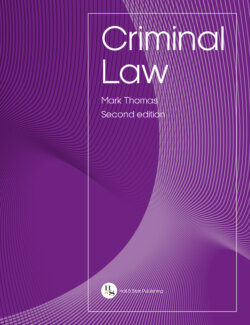Читать книгу Criminal Law - Mark Thomas - Страница 49
На сайте Литреса книга снята с продажи.
1.7.3.3 Sentencing powers
ОглавлениеSentencing, generally, can take one of two forms (or both):
•custodial; and
•non-custodial.
The sentencing powers of both the magistrates’ court and the Crown Court are detailed in Table 1.9. It should be noted that these powers are ultimately affected by a number of factors, including the statutory maximum for the offence, the court in which the offender is sentenced, the age of the defendant and the plea of the defendant.
Table 1.9Sentencing powers
| Sentencing power | magistrates’ court Crown Court | Crown Court |
| Custodial | •maximum 6 months (for a single summary offence); •maximum 6 months (for multiple summary offences); or •maximum 12 months (for multiple either-way offences). | No maximum except statutory maximum. |
| Non-custodial | Fine: Maximum £5,000 | Fine: Unlimited |
| Community order (maximum 3 years), for example: •unpaid work; •curfew requirement; and •electronic monitoring requirement. | ||
| Discharge: This is when the court decides that punishment would not be appropriate for this particular defendant. There are two types of discharge: (a) Absolute discharge – no further action is taken, although the offender will receive a criminal record. (b) Conditional discharge – no further action is taken, although the offender will receive a criminal record. Action may be taken where the individual commits a further offence within a period of time set by the court. |
